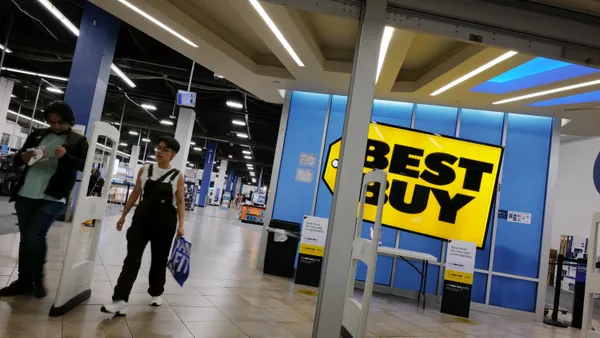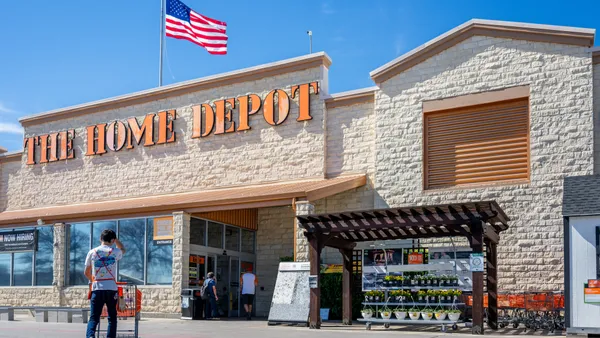Editors note: This story previously reported that 19 underperforming Sears stores would shutter before April based on a Jan. 3 SEC filing. Sears Holdings announced this morning it will close a total of 150 Sears and Kmart stores.
Dive Brief:
-
UPDATE: Sears Holdings will shutter an additional 150 unprofitable stores, including 108 Kmart and 42 Sears stores in order to curtail losses, the retailer announced on Thursday. Here is a list of the stores set to close.
-
Sears Holdings on Wednesday announced it has entered into a $500 million committed secured loan facility, maturing in July 2020, with Seritage, its subsidiary real estate investment trust. Some $321 million was funded under the loan facility Wednesday and up to an additional $179 million may be drawn in the future, according to a press release.
-
Sears is also selling its iconic Craftsman line of tools for $900 million to Black & Decker, which will develop, manufacture and sell the branded products in non-Sears Holdings channels. Sears will continue to source and sell Craftsman-branded products under a perpetual license agreement. The sale agreement includes a $525 million cash payment at closing, $250 million at end of year three and annual payments to Sears Holdings of between 2.5% and 3.5% on new Stanley Black & Decker sales of Craftsman products through year 15, according to a press release.
Dive Insight:
Sears Holdings continues to capitalize on its massive real estate holdings, leveraging that clout to fund operations, in addition to closing stores. The store closings are part and parcel of its previously stated goal to become an “asset-light” company, but its continuing debt acquisition, and the fact that it doesn’t have much room to use its liquidity to improve its operations, bodes challenges for its future.
“Apart from its need to keep cash coming in to set ever-increasing operating losses, the company’s maturity schedule means it will have a lot on its plate to refinance a capital structure that has $3.8 billion due by July 2020, excluding its cap leases and commercial paper/MTN notes,” Debtwire analyst Philip Emma said, in a report emailed to Retail Dive last month.
While Sears in the past has said that that it doesn’t intend to borrow money to fund continuing losses, CFO Jason M. Hollar in his statement Wednesday said the new loan facility “will provide Sears Holdings with additional financial flexibility and support our operations as we meet all of our financial obligations.”
The loan, bearing interest at a rate of 8% per annum and guaranteed by the company, is secured by mortgages on 46 real properties and will be secured by additional real properties if the remaining $179 million loan commitment is drawn, Sears said. The loan is intended to provide liquidity to fund the company’s operations while it initiates a process to market and sell a portfolio of its real estate assets, the proceeds of which would primarily be used to repay outstanding debt.
Sears has used that word “flexibility” in the past, which leaves “a lot of room for interpretation,” Emma said in his report. “[G]iven that the company is running LTM negative adjusted EBITDA of $ 1.1 billion, or negative $884 million after management’s add-back of the pension expense, there is a long path back to profitability and a lot of additional debt that can be incurred in a ‘transition,’” he also wrote.
The store closures come on the heels of a December filing stating the company had obtained a $200 million secured standby letter of credit facility provided by CEO Edward Lampert’s ESL Investments hedge fund to support its operations. A Business Insider report earlier this week also stated that the retailer was accelerating its store closings: The closures would leave Sears with fewer than 1,500 stores, down some 60% from 2011, when the company ran 3,500-plus stores by Business Insider’s measure.
Meanwhile, Sears has managed to hang on to some of the value of its Craftsman tools line despite selling it off. Craftsman is among the best known American brands ever — its trademark was first registered by Sears in 1927 — and remains a favorite among weekend tinkerers and serious grease monkeys alike. Although it has remained one of Sears’ best-selling categories, sales have slipped of late and the company is already selling the tools through third-party retailers.












